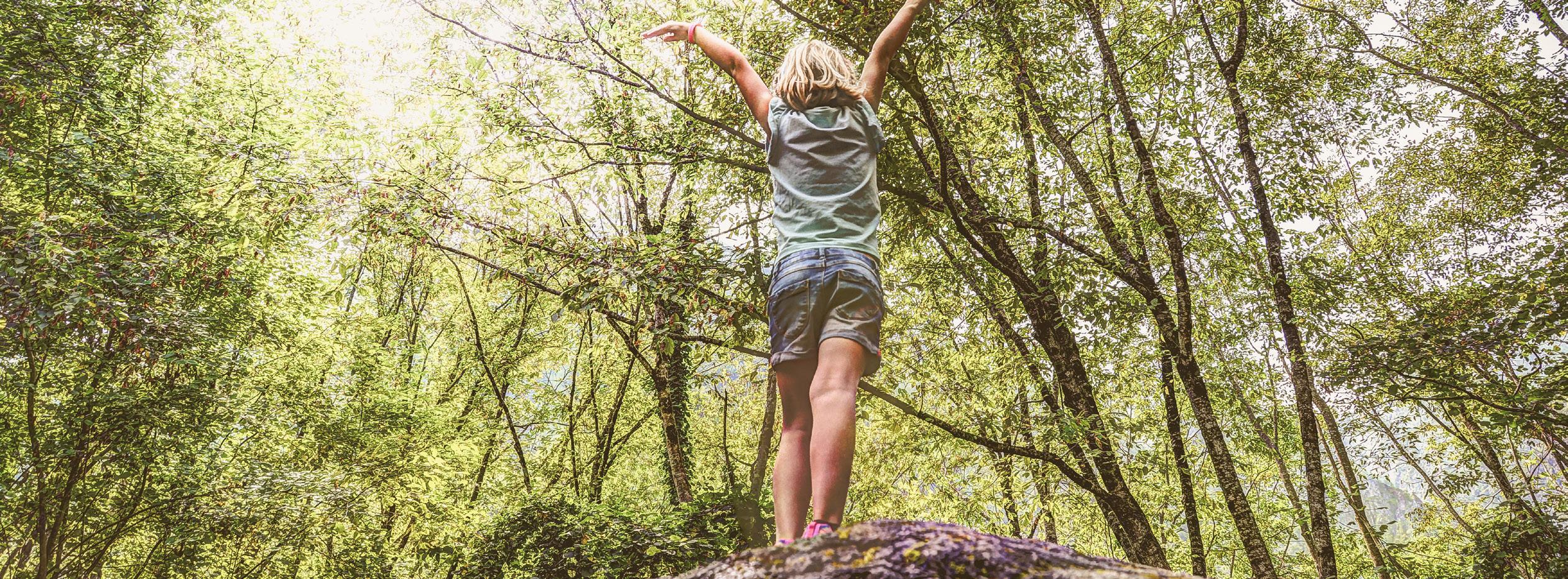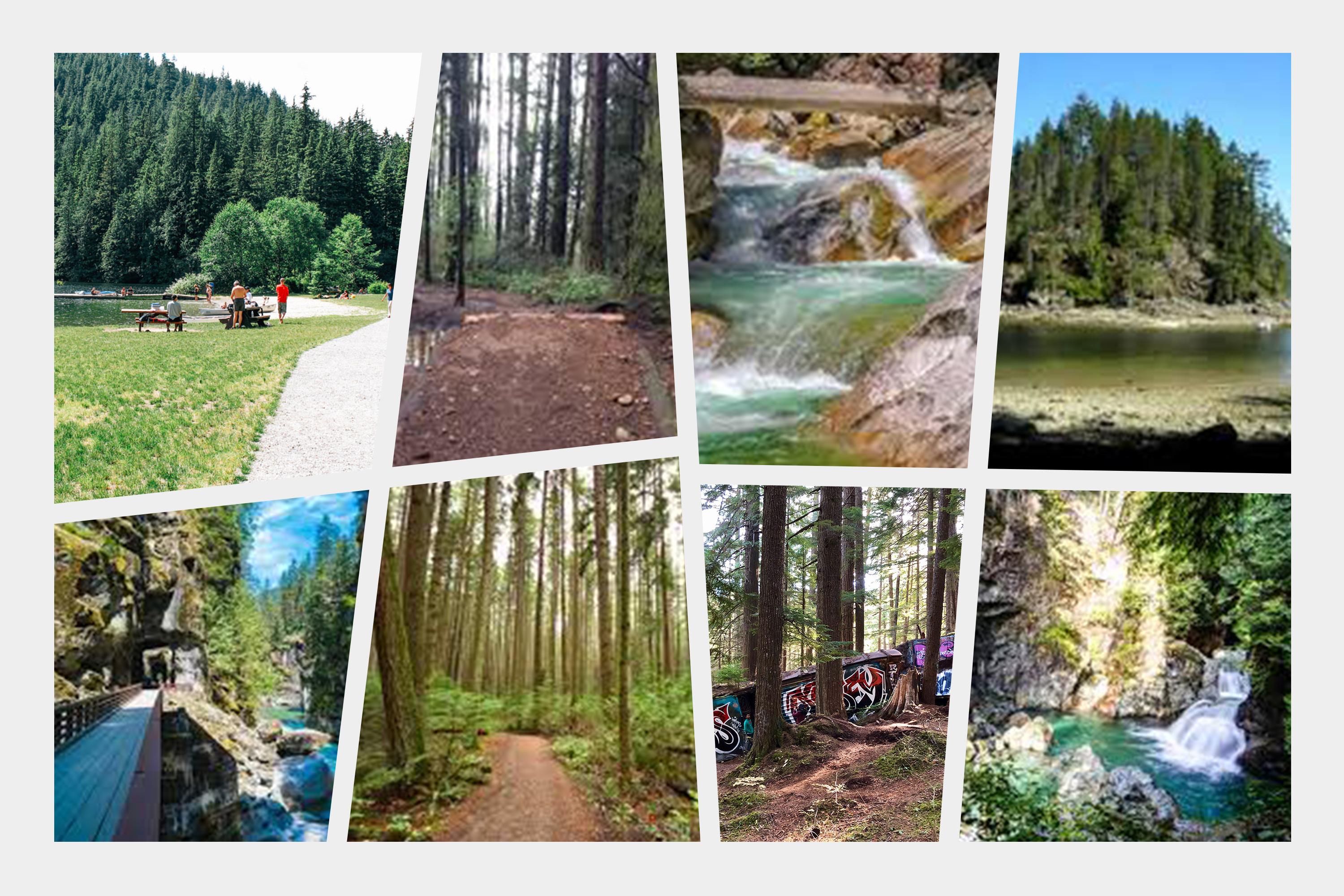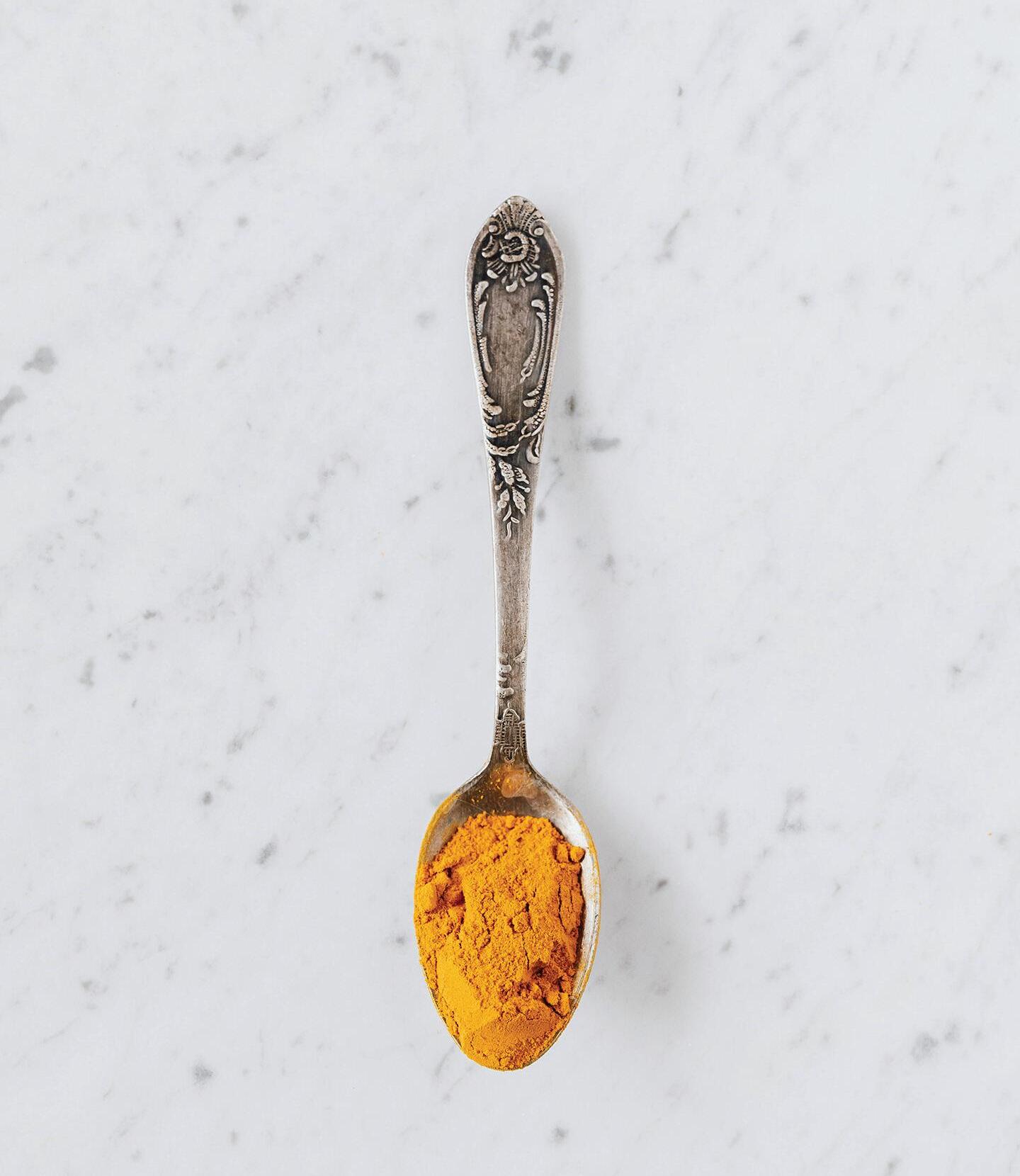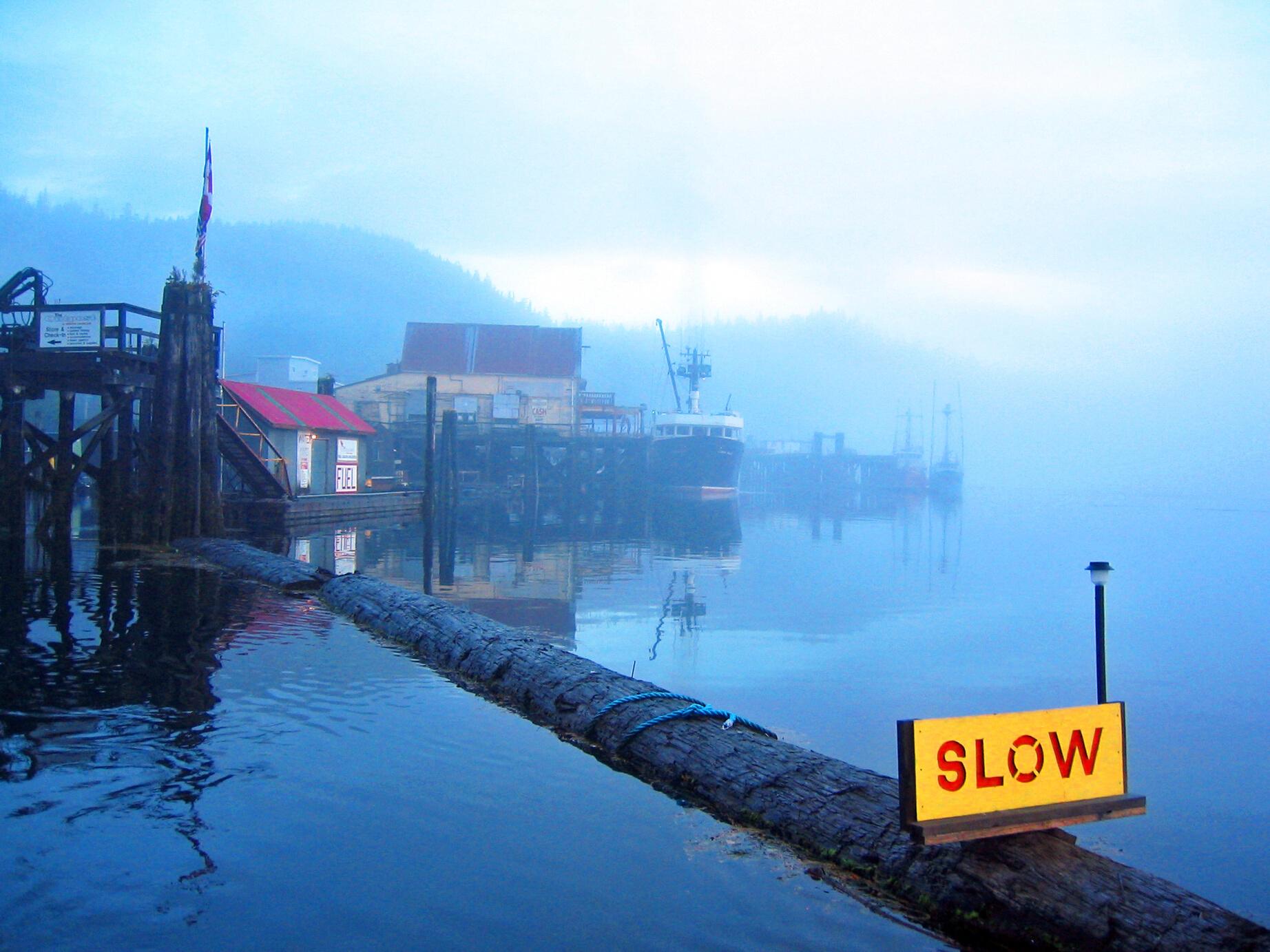




In-person, outdoor and online classes start July 6, 2020
Our new safety measures for in-person classes Register Online Read To secure your spot



A lot has changed since our last issue, but we’re still here, and we have so much to share with you. After several months spent hunkered down at home, we’re slowly starting to emerge, adjusting to the “new normal” as we navigate online schooling or the return to a revised in-school plan while trying to keep up with work in our adjusted surroundings. For many of us this means working from home, and we share some great tips on how to do so successfully online.
As businesses begin to open up and BC loosens its restrictions, some are planning to explore beyond their own backyards. To help you safely plan your summer getaways, we’re sharing some tips from AdventureSmart BC.
Publisher & Managing Editor
Andrea Vance editor@westcoastfamilies.com
Editor Bianca Bujan bianca@westcoastfamilies.com
Contributing Editor
Jodi Iverson jodi@westcoastfamilies.com
Art Director & Layout
Kristy Hill studio@westcoastfamilies.com
Administration Jennifer Bruyns admin@westcoastfamilies.com
Accounts Receivable & Payable finance@westcoastfamilies.com
Advertising sales@westcoastfamilies.com 604 249 2866
Contributors
Alyssa Bauman
Sandra Riches
Siobhan Ward
Tricia Edgar
Bianca Bujan
Andrea Vance
For distribution inquiries, please email publisher@westcoastfamilies.com
All contents copyrighted © Written permission from the publisher is required to reproduce, quote, reprint or copy any material from WestCoast Families
Mailing address: 1215-C56 St. Box 18057 Delta, BC V4L 2M4 T 604 249 2866 | F 604 676 2802




www.twitter.com/wcfmag www.facebook.com/westcoastfamilies www.pinterest.com/wcfmag
Instagram: @westcoastfamilies
It’s important to stay healthy as we work together to flatten the curve here in BC, so we’re sharing some delicious, immune-boosting drink recipes, thanks to Alyssa Bauman of Nourished.ca. We’re also sharing our favourite local, family-friendly hiking spots, so you can get outside, breath in the fresh air, and explore some new fun spots in our province. And for those inevitable rainy days, we have some creative craft projects that you can try at home too.
I’m also sharing a bit of my personal story of growing up in Vancouver as a child of mixed race, and how I quickly learned that it’s more important to talk to children about race than to teach them to be colour blind. In my story, I share some tips on how to talk to younger kids about racism, and provide some resources to help you start the conversation at home.
We’re excited to be sharing some new content with you, and want to thank you for continuing to follow along with us as you navigate your own way through this ever-changing landscape. As Dr. Bonnie Henry says, we hope that you will “Be kind, be calm, and be safe.”
Let the summer fun begin!

Editor



by Sandra Riches, AdventureSmart BC
We rarely head out for an outdoor adventure with the expectation that something will go wrong, and, most times, everything will go right. However, that one time that the unexpected happens, your investment in trip safety can mean the difference between a successful outcome and becoming a statistic.
Whether your activity is during the summer or winter, on land or water, and anywhere in Canada, remember the three T’s and follow these simple steps:
• Plan your travel route
• Know the terrain and conditions
• Check the weather
• Always fill out a trip plan Trip Planning
• Obtain the knowledge and skills you need before heading out
• Know and stay within your limits
Always carry the essentials and know how to use them:
• Flashlight
• Fire making kit
• Signalling device (i.e. whistle)
• Extra food and water
• Extra clothing
• Navigational/communication devices
• First aid kit
• Emergency blanket/shelter
• Pocket knife
• Sun protection
• Add other equipment specific to your chosen activity, season and location.

No one ever expects to get into trouble outdoors. But, a turn in the weather, mistake in judgment, unexpected injury, equipment failure, or sudden nightfall can quickly change any recreational outing into a crisis. Does anyone know where you have gone and when you expect to return?
TO HELP ENSURE THAT YOU HAVE A SAFE SUMMER TRIP, CHECK OUT THIS ADVENTURESMART TRIP PLAN APP VIDEO:
AdventureSmart, and its suite of five programs, is a national prevention program focused on reaching Canadians, and visitors to Canada, who participate in outdoor recreational activities. In order to provide the largest possible number of Canadians and visitors to Canada with consistent and relevant safety information, and to ensure that opportunities to engage the public are maximized, AdventureSmart and its partners take a broad, encompassing approach to the delivery of adaptable safety information in-person, and online.
Through the collaborative efforts of our various partners, regional coordinators, and volunteers, AdventureSmart is dedicated to encouraging participants to “Get informed and go outdoors”.

by Tricia Edgar
It’s morning in the forest, and as the group sits to listen to a story, a glorious interruption occurs. A heron glides over us and sits on a tree, alternately watching both us and the pond. We wonder if it is listening to the story too.
It’s just before snack time, and the mud puddle café is busier than ever. The children sit around a puddle collecting mud and wrapping it in leaves. “Sushi!” they exclaim, handing one to the teacher.
It’s pouring rain at the end of the day, and a group of children walks up a forest path, proudly carrying a stick that is much longer than any one of them. As they walk, we make up a song about carrying the stick, and occasionally the group erupts into laughter at the silliness of the lyrics.
These are typical scenes from class time at a forest school in Metro
Vancouver. In the last decade, the forest school approach to outdoor learning has been adopted by many families, childcares, preschools, and outdoor programs across the country.
At forest school, children connect to nature and with each other through play. They explore nature at their own pace, whether that’s running through a park or sitting in the grass watching a worm. Adults provide social support, and materials to inspire children, and encourage learning by asking questions rather than moving through a specific curriculum.
In today’s uncertain world, forest school is not just physically healthy – it also promotes mental health. Children who play outdoors experience joy and connection and build their confidence and resilience. They return home wet, muddy, tired, and most of all, happy.
Go on walking adventures every day, no matter what the weather. Find something to enjoy about the weather - if it’s a rainy day, that’s perfect for jumping in puddles.
Get to know the land and connect to the stories of the land you are on, including the Indigenous histories of that land. Who was connected to that place before you?
Focus on local nature experiences. Whether you’re tending to the snails that live in your window box or walking to a local field, connecting to nature on a regular basis where you are will provide your child with the strongest connection to the land.
Enjoy the process. Let your children take you where they want to go. Instead of focusing on a hike, enjoy exploring whatever your children would like to investigate in that moment.
Honour children’s desires to run, jump, and climb, checking in with them about how their body and mind are feeling. Ask them: what’s your plan? As we support our children in these small decisions, it helps them develop a deeper trust in their own judgment.
Listen to what each place can teach you. Watch the puddles form during the rainy months, and jump in them. Notice how the flowers in front of a house that you walk past are host to many bees. Finding joy and gratitude in these small moments can turn your day around.
My years as a forest school parent and facilitator have given me confidence in the immeasurable wonder, curiosity, empathy and resilience of children. Watching them form relationships with the land and each other is a joy every day.
Tricia Edgar is the Program Director of Fresh Air Learning, a forest school in Metro Vancouver. Visit them at www.freshairlearning.org. She is honoured to live and work on the traditional territories of the xʷməθkʷəy əm (Musqueam), Sḵwx wú7mesh Úxwumixw (Squamish), and səl ilw ətaʔɬ (Tsleil-Waututh) peoples.
The Outdoor Playbook, developed by a UBC-based team of design professionals, provides guidance for parents, teachers, and administrators seeking to create outdoor play and learning spaces for children.
The Child and Nature Alliance of Canada supports educators who are seeking to expand their forest school practice.
Spreading Our Branches is a Facebook group for forest school educators in Metro Vancouver and beyond.
The Free Forest School movement supports parents and educators to incorporate this learning into homes, communities, and classrooms.

by Siobhan Ward, Youth Program Specialist, Scouts Canada
Finding fun, close-to-home activities that kids will enjoy, using the supplies that you have on hand can be hard – but that doesn’t mean that it’s impossible! To help families keep kids engaged, Scouts Canada has modified some of their favourite activities so that they can be done easily from home while practicing safe social distancing. Here are five activities for families to try at home or out in their local community.
How do boats float? Their shape and materials allow them to float on top of the water and support the weight of their passengers or cargo. Challenge your family to make small boats out of materials from around the house that can hold a marble or other small object. Try making boats in different shapes and out of different materials and compare them. See what boat can hold the most weight, or find a nearby stream and see which boat goes the fastest. Anchors away!
There are lots of fun and creative ways to keep moving while sticking close to home. Build an obstacle course in your living room or backyard out of materials found at home. Tables, chairs, exercise balls or hockey sticks can all be creatively converted into obstacles. Get your family to (safely!) race through the course and see who can get the best time. Set up competing obstacle courses for each other and see who can create the coolest course!
Keeping our world clean and green is a nice way to give back to your community while staying close to home. If you’re able to use green spaces in your neighbourhood, help clean up a nearby park. You can also stick close to home by cleaning your street or a neighbour’s yard. Follow health guidelines and wear gloves and a mask while picking up items. Encourage your family to find the weirdest items they can – maybe it’s a wagon, helmet or piece of furniture. Create a story about how that item got there – maybe astronauts accidentally dropped their helmet while in outer space and it landed in your park! See who can come up with the most creative tale.
How well do you know about your animal neighbours? Take your family on a habitat walk and look for evidence of different living things around you, from anthills to birds’ nests to groundhog holes. If you aren’t sure what kind of animal may live in a certain nest or burrow, try taking a photo and comparing it to others on the internet. You can make looking for animal homes a regular part of your neighbourhood walks.
Getting used to seeing people through a computer screen can be an adjustment for kids, but it doesn’t mean you can’t share cool things virtually! Help your kids to think about the special parts of your neighbourhood – the park, a favourite tree, or your secret path through the woods. Take photos or videos of these areas and offer a tour of your neighbourhood’s highlights to your friends or family, sharing why these areas are so important! If you have friends or family who don’t live close by, you could even use Google Maps to give them a tour of your city’s highlights.
Finding ways to have fun inside and around your house doesn’t have to be an impossible task. For more activities for kids that will help them stay active, be creative and curious, have fun, and make a difference in your community, check out Scouting at Home. Scouts Canada releases new activities for kids weekly.
Kids in Scouts have fun adventures, discovering new things and experiences they wouldn’t elsewhere. Along the way, they develop into capable, confident and well-rounded individuals who are better prepared for success in the world. For tens of thousands of children and youth across Canada, Scouts is the start of something great. Scouts Canada is the country’s leading co-ed youth organization, offering programming for children and youth aged 5-26 in multiple languages, reflecting Canada’s multicultural landscape and communities. For more information, visit Scouts.ca.

by Bianca Bujan
I didn’t realize that I was a visible minority until I started high school. I had moments throughout my childhood where the colour of my skin or the kink in my hair was the brunt of a joke, the cause for lingering stares, or the reasons behind offensive language and actions used against me, but I didn’t make the connection until I was much older.
Growing up in Vancouver, a city known for its cultural diversity, I was surrounded by people from all different backgrounds, and multiculturalism was a part of our school curriculum - but only in a positive light. We were encouraged to taste the foods of different countries and recognize the traditions of various cultures. But race - and more specifically racism, was rarely discussed.
The truth is, talking to kids about racism can be as awkward as talking to them about sex. When embarrassing comments are made, or curious questions arise, we tend to redirect the conversation, ignoring the inappropriate remarks or shushing our children as an avoidance tactic. As parents, we worry that by bringing up the topic of racism, we are inviting our children to discriminate, or even become racist as a result.
But by avoiding the topic, we’re actually doing more harm than good. Regardless of how much you try, kids are not blind to race. From early on, they notice and comment on differences, and if they aren’t encouraged to talk about their observations and ask questions, they come to their own conclusions, or they rely on the opinions of those who aren’t afraid to share their biases.
By teaching our children to be colour blind, we could be teaching them to turn a blind eye to other cultures, to racism and to recognizing the differences in others - and themselves. Instead, we should use their awkward comments as teachable moments.
Children will ask questions that may seem inappropriate to us, because they see something that sparks their curiosity, and they speak their mind - without filtering their thoughts. As inappropriate as it may seem, all they
want is the truth, and it is up to us as parents to give them the answers they seek. Instead of scolding them for their comments, explain to them why some people may look, act, or speak differently than they do. Explain to them why their words may be hurtful, and use words and examples that are age-appropriate and relatable.
When we look at our southern neighbours, we tend to assume that racism is an American issue, but racism exists here in Canada, too, and it’s important that our children understand that not everyone is treated equally. By being open with our children about the prejudices that exist, and by teaching them to celebrate the differences in others, perhaps we will create a more inclusive generation that will celebrate the many colours of Canadians, not be blind to them.
Here are some resources to help you start the conversation with your kids, learn more about how you can give back, educate yourselves on or support your wellbeing as the world navigates through these difficult times:
• ANTIRACIST READING LIST FOR KIDS (INDIGO)
• KIDS BOOKS & VIDEOS THAT CELEBRATE BLACK CULTURE (EPIC BOOKS)
• BLACK LIVES MATTER VANCOUVER - COMMUNITY & MENTAL HEALTH RESOURCES (BLM VANCOUVER)
• BC BLACK HISTORY AWARENESS SOCIETY
• BLACK-OWNED BUSINESSES IN VANCOUVER (AFROBIZ.COM)
• BEST BLACK MOVIES ON NETFLIX (OPRAH.COM)
• ANTIRACISM RESOURCES FOR TEACHERS (BC TEACHERS’ FEDERATION)
• FAMILY MOVIES ABOUT BLACK HISTORY (AMAZON)
Hiking is a great way to get the whole family outside enjoying fresh air. When the kids are outside, they’re off screens and exploring the Earth’s classroom. To help you find new outdoor spaces to explore, we asked the team at WestCoast Families for their favourite local hikes, and here’s what they had to say.
*Please Note: Some areas may be closed due to COVID-19 restrictions. Please check each hiking destination before you head out.
Publisher
This is a network of trails contained in more than 750 hectares of forest on the University Endowment Lands, found to the west of the city of Vancouver.
TIME: Allow at least one hour to explore. There are many different routes and loops found throughout the park.
WHY? You can spend the whole day exploring and walking the trails here, stopping to enjoy the trees and creeks. The trails are for all ages and abilities, and can be walked with very little elevation.
This is a wilderness community park and natural area, and very popular for hiking and mountain biking. Some trails are designated hiking only, so you can avoid any fast moving bikes! Lots of terrain and trails to cover.
TIME: Allow at least an hour to explore. There are many different routes through the park.
WHY? This can be a challenging hike and bike trail up and down the hillsides, good for all abilities from beginner to very fit. There are some great hidden surprises like the grassy meadow picnic area in the middle, and the natural spring water fountains too.
This section of trail connects a series of old train tunnels and bridges that cut through the solid granite walls and pass over the wild Coquihalla River.
TIME: Give yourself at least 1 hour to complete the hike.
WHY? The history of the tunnels and railway is extremely cool, and the viewpoints of the Coquihalla Canyon are spectacular. You can hike or bike this trail and go a long way in both directions. Great for all ages.
Jug Island is not accessible, so the name is a bit deceiving, but this trail in the northern tip of Belcarra Regional Park offers a hike to a beach that faces the island and offers great views of Indian Arm.
TIME: About 2.5 hours round trip.
WHY? The viewpoints are amazing and the rocky beach at the end is perfect for a picnic. Be aware of wildlife here. The trails are mostly under tree cover, which is great for summer sun.

Contributing Editor & Sales
This is a very popular trail for families, as it passes through scenic forests, offers several views of the lake, crosses a suspension bridge, and reaches a quieter beach at the north end.
TIME: You’ll need at least 3.5 hours to complete this hike.
WHY? It’s moderately challenging so it feels like a real hike, and you can take a dip in the lake to cool off.
Art Director & Layout
This is an easy trail that leads to a spectacular waterfall and campsite.
Time: Allow 2 hours for a round trip to the falls.
WHY? This hike is a short, dog-friendly hike, perfect for an afternoon outing, and takes adventurous families to a campsite in Golden Ears Park to set up for the night.
Editor
This well-travelled trail takes you to colourfully painted boxcars, which have been sitting in the forest since 1956. Kids love climbing through and on top of the train cars, and each visit to the site presents a whole new scene as the boxcars are constantly being spray painted by new visitors.
TIME: You’ll want to spend at least 1 hour here.
WHY? This hike is great for all ages, and the suspension bridge over the Cheakamus River is spectacular. There are photo ops galore here!
This is a short, popular hike in North Vancouver that crosses the Lynn Canyon Suspension Bridge and follows the river and back, crossing a wooden bridge.
TIME: Approximately 1 hour.
WHY? The Lynn Canyon Suspension Bridge is spectacular, and free to cross. There is some elevation here, so wear good shoes and enjoy a small workout.
Note: the Lynn Canyon Suspension Bridge may be closed due to COVID-19, be sure to check the website before heading out for your hike.
by Alyssa Bauman, Nourished.ca
It’s summer, and many families are venturing out for a little fun and adventure as businesses open up and friends gather again in small groups. Immunity is still very important as the virus lingers in BC, and we want to ensure our systems are as healthy as possible. To stay healthy, Alyssa shares some great, refreshing recipes for summer to boost our immune systems while staying fuelled up for summer fun.
This recipe is not for the faint of heart. It is zingy and spicy, and leaves a slight burn in the throat - a feeling you will either love or hate. It is health-in-a-cup, and you can almost feel its powers. Sip it cold in the summer, or even hot in the winter. It has every healing herb imaginable.
TURMERIC: A wonder root, this bright orange root is an ancient Ayurvedic power healer. It helps with inflammation, and is known to prevent cancers and terminal aging.
GINGER: Another interesting root, this zingy root also helps with inflammation, and builds up immunity while also being a digestion powerhouse.
CAYENNE: This spicy red powder is part of the capsicum family. It is known to speed up metabolism, fight infection, prevent cancers, and is a natural detoxifier.
LEMON: My all-time favourite citrus - I cannot go a day without lemons. From lemon water to lemon salad dressing, my house is constantly stocked with this alkalizing fruit. Vitamin C is a huge healer, but a lemon’s alkalizing properties trump all.
CINNAMON: Aside from its delicious flavour, this ground powder is loaded with antioxidants, and it helps to protect the heart and lower blood sugars.
INGREDIENTS:
1 thumb size knob of turmeric, peeled if not organic
1 thumb size knob of ginger
1/2 lemon, peeled
1 teaspoon cinnamon or 1 cinnamon stick
1 teaspoon cayenne pepper
10-12 cups water, or until large pot is full
DIRECTIONS:
Fill a large pot with water. Add all ingredients and boil. Simmer for hours.
Cool and serve either hot, or store in the fridge in a glass pitcher.
Skip the high fructose corn syrup and yellow dye found in classic yellow drinks, and press a fresh juice that’s sweetly natural instead. Drink in the sun with this antioxidant, potassium, Vitamin C and Vitamin A-packed tonic. A strengthened immune system, energy boost and glowing skin are just a few of the other sweet perks. Who can beat that?
INGREDIENTS:
2 mangoes
1 lemon
1 orange
1 yellow or orange pepper

2 inch piece of ginger (more for extra bite)
DIRECTIONS:
Peel mangoes and orange and wash pepper.
Slice pepper and remove seeds.
Peel ginger.
Juice and pour over ice.

Skip the high fructose corn syrup and yellow dye found in classic yellow drinks, and press a fresh juice that’s sweetly natural instead. Drink in the sun with this antioxidant, potassium, Vitamin C and Vitamin A-packed tonic. A strengthened immune system, energy boost and glowing skin are just a few of the other sweet perks. Who can beat that?
INGREDIENTS:
2 mangoes
1 lemon
1 orange
1 yellow or orange pepper
2 inch piece of ginger (more for extra bite)
DIRECTIONS:
Peel mangoes and orange and wash pepper.
Slice pepper and remove seeds.
Peel ginger.
Juice and pour over ice.







